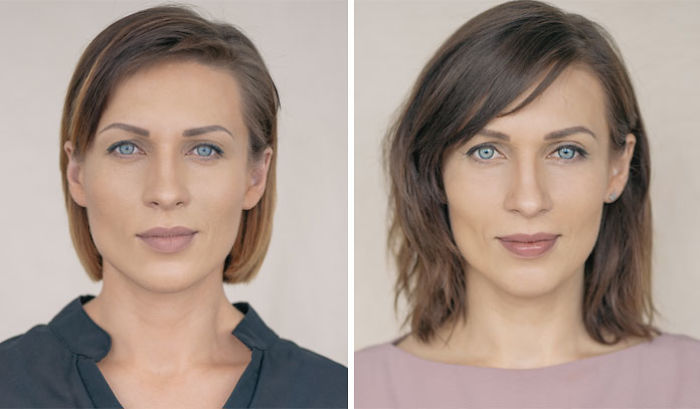Pregnancy is an extraordinary journey that transforms a woman’s body in myriad ways, and one of the areas often scrutinized is breast appearance. Understanding what is considered normal for breasts before and after pregnancy can demystify the changes that occur and help women navigate their own expectations. This discussion delves into the physiological alterations, societal pressures, and emotional ramifications surrounding breast changes during and post-pregnancy.
To commence, it is vital to recognize that breasts are composed primarily of glandular tissue, fat, and connective tissues. During puberty, the breasts develop and gain volume under the influence of hormones. However, pregnancy instigates a significant metamorphosis. This transformation is catalyzed by the surge in hormones such as estrogen and progesterone, which prepare the body for breastfeeding. As such, the breasts may increase in size, become firmer, and exhibit heightened sensitivity.
In the initial stages of pregnancy, women may notice that their breasts feel heavier and tender. The areolas can also darken and increase in size. This is an entirely normal response, indicating that the body is gearing up for lactation. Women often refer to this phase as “the bloom of pregnancy,” a term that encapsulates both the beauty and the physicality of these changes.
As the pregnancy progresses, the breasts continue to evolve. In anticipation of breastfeeding, the lobules — small milk-producing glands — begin to proliferate, and the overall breast tissue may increase in volume due to additional fat storage and glandular growth. The most significant growth may occur in the second and third trimesters. It’s imperative to note, however, that every woman’s experience is unique; some may see dramatic changes, while others may have more subdued transformations.
The aftermath of pregnancy, particularly following a period of breastfeeding, presents yet another set of unique changes. Post-lactation, breasts may appear less voluminous. This reduction is often a source of concern among new mothers who have compared photographs of their breasts pre-pregnancy and post-breastfeeding. Understandably, these individuals may feel apprehensive about the prospect of their bodies failing to return to their previous state.
Breasts can experience deflation, sagging, or changes in shape — all of which are influenced by various factors. Genetics play a pivotal role; women with a family history of certain breast characteristics may be more likely to experience similar outcomes. Moreover, the amount of time spent breastfeeding can also affect the return of breast firmness. Longer durations of lactation might lead to more pronounced changes due to the sustained stretching of breast skin and tissue.
Another factor to consider is weight fluctuations throughout and after pregnancy. Weight gained during pregnancy does not always revert to pre-pregnancy levels, with some women experiencing changes in their fat distribution. This can lead to alterations in breast size and shape as well, presenting additional layers of complexity to the transformation experienced.
When examining before-and-after photos, it is crucial to contextualize that personal narrative. Many women feel immense pressure from societal ideals that perpetuate a specific “desired” breast aesthetic. The advent of social media can exacerbate this feeling, as curated images often present an unattainable standard of beauty. This can lead to feelings of inadequacy, especially when comparing oneself to seemingly perfect portrayals that may not authentically depict the realities of post-pregnancy bodies.
Moreover, the emotional journey intertwined with these physical changes cannot be overstated. Women may experience a myriad of feelings ranging from pride in their bodies’ abilities to nurture life to frustration or disappointment with the changes that have occurred. Supporting oneself through this transformative period requires patience, compassion, and the acknowledgment that every body tells a unique story.
It is incumbent upon mothers — and society as a whole — to initiate conversations surrounding these changes and rebuild the narrative around postpartum bodies. Dispelling myths concerning “snap-back” culture is essential; women should be educated about the normal variability and individuality of breast changes. Practicing self-love and acceptance should be encouraged, as these values foster resilience against societal pressures.
For those contemplating cosmetic interventions following pregnancy, it is essential to conduct thorough research and make informed decisions. Surgical options, such as breast augmentation or lifts, are available, but discussions with qualified healthcare providers are necessary to gauge the appropriateness of these procedures based on individual circumstances and expectations.
The promise of motherhood encompasses remarkable physical and emotional dimensions. The journey does not culminate merely after childbirth; rather, it continues as the body adapts and transforms in alignment with new roles and experiences. Recognizing and embracing these changes is equally as significant as the miraculous act of bringing life into the world.
Ultimately, the evolution of breasts during and after pregnancy embodies a collage of experiences, narratives, and emotions. Women must remind themselves that what is deemed “normal” is a broad spectrum that encompasses myriad possibilities. The most powerful step in this journey is self-acceptance; understanding that one’s body is resilient, adaptive, and deserving of love in all its stages is the key to navigating the post-pregnancy landscape.

